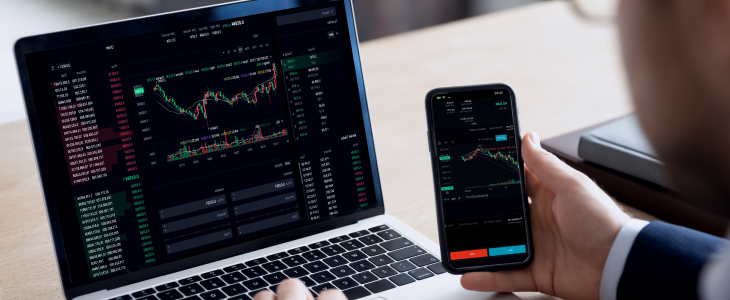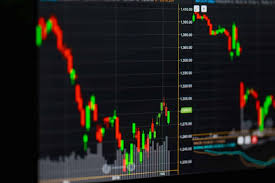
The Ultimate Guide to Forex Currency Trading
Forex currency trading is a fascinating and dynamic market that attracts traders from all over the globe. With a daily trading volume exceeding $6 trillion, the foreign exchange market is the largest and most liquid financial market in the world. If you are interested in entering the world of forex trading, it is essential to have a solid foundation and understanding of the market dynamics, trading strategies, and risk management techniques. In this guide, we will discuss various aspects of forex trading, including how to get started, the importance of choosing the right broker, and some effective trading strategies. For those interested in trading from South Africa, you can refer to this forex currency trading Forex Brokers in South Africa resource, which provides insight into local brokers.
Understanding Forex Trading
Forex trading involves exchanging one currency for another with the aim of making a profit. Currencies are traded in pairs, such as EUR/USD or USD/JPY. The first currency in the pair is known as the base currency, while the second is the quote currency. The exchange rate indicates how much of the quote currency is needed to buy one unit of the base currency.
Key Concepts in Forex Trading
Before diving into forex trading, it is crucial to understand some key concepts:
- Pips: A pip is the smallest price move that a given exchange rate can make. Most currency pairs are quoted to four decimal places, meaning that the smallest change in quote is 0.0001.
- Leverage: Forex trading often involves using leverage, allowing traders to control larger positions than their initial capital would permit. While leverage can amplify profits, it can also increase losses.
- Margin: Margin is the amount of money required to open a leveraged position. Understanding margin is essential for effective risk management.
- Lot Size: Currency trades are quantified in lot sizes. A standard lot is 100,000 units of the base currency, while a mini lot is 10,000 units and a micro lot is 1,000 units.

Types of Forex Markets
There are several types of markets within forex trading:
- Spot Market: This is where currencies are traded at their current prices, with the transactions occurring immediately.
- Forward Market: This market allows traders to lock in exchange rates for currency transactions that will take place in the future.
- Futures Market: Similar to the forward market, this provides standardized contracts that specify the price and date of the future transaction.
Choosing the Right Forex Broker
One of the most critical steps in beginning your forex trading journey is selecting a reputable broker. A good broker will provide you with access to the market, trading platforms, and the necessary tools to succeed. Here are some factors to consider:
- Regulation: Ensure the broker is regulated by a recognized authority to protect your funds and ensure fair trading practices.
- Transaction Costs: Look for transparency in fees, such as spreads and commissions, which can significantly impact profitability.
- Trading Platform: The trading platform should be user-friendly, stable, and equipped with the tools you need for effective trading.
- Customer Support: Reliable customer service is essential, especially when you encounter issues or have questions.
Developing a Trading Strategy
Trading without a plan is akin to gambling. A solid trading strategy helps mitigate risks and improve your chances of success. Here are some popular trading strategies:

- Scalping: This involves making numerous trades throughout the day to capitalize on small price movements. Scalpers typically hold positions for a few minutes to hours.
- Day Trading: Similar to scalping, day traders open and close positions within the same day but may hold trades for longer periods.
- Swing Trading: This strategy aims to capture gains in a currency pair over several days or weeks. Traders use technical analysis to find potential turning points.
- Position Trading: This is a long-term strategy based on fundamental analysis and trends. Position traders focus on the bigger picture and hold trades for weeks, months, or even years.
Risk Management in Forex Trading
Effective risk management is vital for long-term success in forex trading. Here are some strategies to manage risk:
- Use Stop-Loss Orders: A stop-loss order automatically closes a position when the price reaches a specified level, limiting potential losses.
- Set Risk-to-Reward Ratios: Ensure that your potential profit justifies the risk you are taking on each trade, often recommended at least 1:2.
- Diversify Your Portfolio: Avoid putting all your funds into one trade. Diversification can spread risk across different assets.
- Limit Leverage: While leverage can magnify profits, it can also amplify losses. Use it cautiously to protect your capital.
Staying Informed
Successful forex traders continually educate themselves about economic indicators, political events, and market sentiment that can affect currency values. Follow financial news, analyses, and reports related to the forex market.
Conclusion
Forex currency trading offers exciting opportunities for those willing to learn and develop their skills. By understanding the market dynamics, choosing the right broker, creating a solid trading strategy, and practicing effective risk management, traders can potentially reap significant rewards. Whether you’re a novice or an experienced trader, keeping abreast of market trends and continuous education will pave the way for success in the forex arena.
